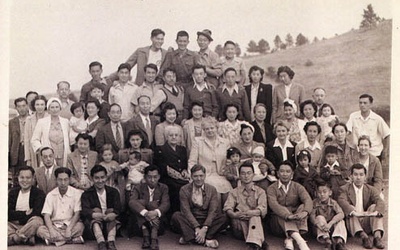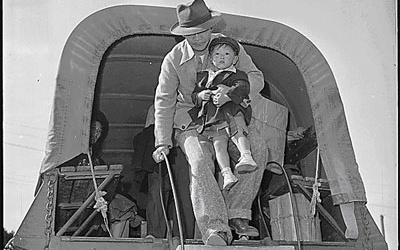Enduring Communities

Enduring Communities: The Japanese American Experience in Arizona, Colorado, New Mexico, Texas, and Utah is an ambitious three-year project dedicated to re-examining an often-neglected chapter in U.S. history and connecting it with current issues of today. These articles stem from that project and detail the Japanese American experiences from different perspectives.
Stories from this series
The Nikkei in New Mexico
April 30, 2008 • Andrew B. Russell
New Mexicans were celebrating their racial and cultural diversity long before most other Americans. Often described as a “tri-cultural society,” comprised of Native Americans, Hispanics, and Anglos, the New Mexico mosaic is actually much more complex. This part of the Southwest is the ancestral homeland of a variety of Indian people, including the Pueblo, Navajo, Apache, and Comanche. Over four hundred years ago, it became the northern frontier of Spain’s vast empire, settled by people already representing Spanish, Indian, African, …
“Concentration Camp” or “Relocation Center” - What’s in a Name?
April 24, 2008 • James A. Hirabayashi
It was almost 20 years ago when I read an article by Dexter Waugh in the San Francisco Examiner titled “Semantic debates on war camps” (May 7, 1976). The issue revolved around the use of terminology on a plaque commemorating Tule Lake as a state historic landmark. At the time I exchanged several letters with the chair of the State Historical Resources Commission, a fellow anthropologist, who voted against the use of the term “concentration camp”, saying that he did …
Words at War: The Sensei of the US Navy Japanese Language School at the University of Colorado, 1942-1946
April 10, 2008 • David M. Hays
We have heard the meaning and effect of the vocabulary used by the majority aimed at the minority Japanese and Japanese Americans while the United States was at war with the Empire of Japan. However, there is quite another, formerly secret and almost unknown, story of the Japanese American sensei at the US Navy Japanese Language School at the University of Colorado. These sensei, through the teaching of Japanese, made a large contribution to both the war effort and the …
Japanese Americans in Texas
March 26, 2008 • Thomas Walls
Texas is a large state with a diverse population. Although Texans of Japanese ancestry have never been large in number, they have nonetheless made big contributions throughout their unique history. The first significant impact was in the early 1900s, when Japanese initiated at least thirty large-scale attempts to grow rice on the southeast coastal plains around Houston and Beaumont. Following a fact-finding visit and report in 1902 by the Japanese Consul General from New York, Sadatsuchi Uchida, men with money …
Japanese Americans in Utah
Feb. 27, 2008 • Nancy J. Taniguchi
From earliest human habitation, the area now called Utah exhibited diversity. The prehistoric Fremont and Anasazi built villages and cultivated crops. Goshuite, Paiute, Navajo (Dine’), Shoshone, and Ute cultures replaced them, the last of whom gave its name to the state. Subsequent groups squeezed Native Americans to marginal lands where they remain today. First, in the 1700s, the Spanish (then the Mexicans) forged the Old Spanish Trail, which bisects Utah. They brought the gift of horses, but also enslaved native …
Japanese Americans in Colorado
Jan. 30, 2008 • Daryl J. Maeda
Japanese Americans have a long and complex history in Colorado, and their story features struggles and perseverance, discrimination and tolerance. Exploring this history from the 1880s to the present enables us to learn about race and racism, civil liberties, and the responsibilities of individuals in a diverse and democratic society. Colorado is notable among states to the degree that 1) it boasted thriving Japanese American communities before World War II; 2) during the war was the site of an internment …

























